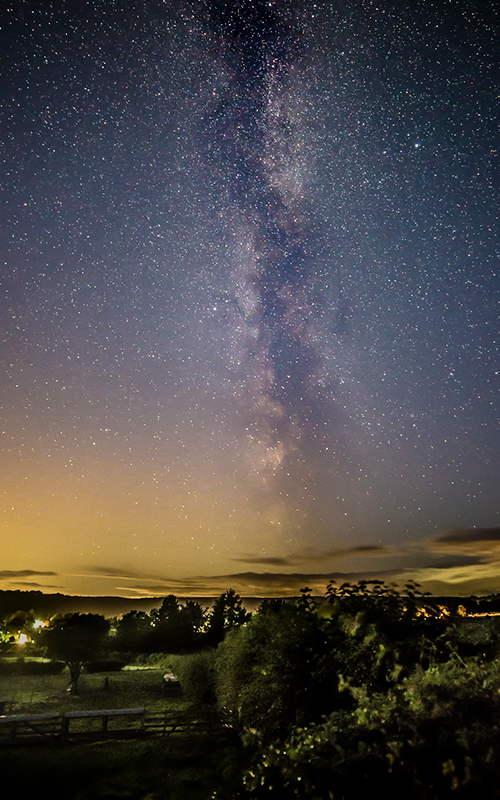Learn all about our International Dark Sky Reserve status
In December 2020, we were designated an International Dark Sky Reserve, along with the Yorkshire Dales National Park, one of only 21 in the world. At a combined area of 3,615km2, it represents the largest area in the UK and one of the biggest in Europe to be simultaneously designated.
But what does this mean, and why is it important?

1. What is an International Dark Sky Reserve?
Dark Sky Reserves are designated by DarkSky (formerly International Dark-Sky Association). They are areas that offer exceptional starry nights and are specifically protected for scientific, natural, educational, cultural, heritage and/or public enjoyment.
2. Who is DarkSky?
DarkSky is the recognised authority on light pollution and is the leading organisation combating light pollution worldwide.
3. What is the criteria to achieve Dark Sky Reserve status?
DarkSky designates International Dark Sky Reserves following an application process. The current criterion that has to be met to gain the status includes:
- Light meter readings to show the area is of sufficient quality and to identify the darkest ‘core area’ of the Reserve.
- At least 67% of properties have to have ‘dark sky friendly’ lighting.
- Support shown from at least 80% of the area and population.
- Dedicated education and public outreach programmes highlighting the value of natural night time darkness.
4. Why is it important?
The North York Moors is home to some of the darkest skies in the country. Achieving Reserve status means the we can raise awareness, conserve and celebrate this special quality.
It provides an opportunity to enhance the dark skies by giving increased importance to appropriate lighting, as well as reducing unnecessary consumption of electricity, minimising carbon footprint and energy costs for properties, as well as attracting visitors interested in astrotourism.
Dark skies conservation also benefits both nocturnal wildlife and human health. Too much artificial light at night can make it difficult for us to sleep well while disturbing the natural behaviour of animals and plants.
5. How long has it taken to apply for Dark Sky Reserve status?
It has taken five years to apply for and achieve Dark Sky Reserve status at the first time of asking.
6. What will change?
Becoming a Dark Sky Reserve doesn’t mean more restrictions, or less lighting, it means thinking about good lighting.
- What will change in terms of planning applications?
We make sure new lighting is dark sky friendly and we are introducing new support through planning guidance to make it easier for applicants to make sure that whatever they install protects our dark night skies. - Street lighting
We have an agreement from our Local Authorities to ensure new or replacement streetlights in the National Park are a maximum of 3000K colour lighting and, unless for heritage purposes, are full cut off with zero upward light. - Existing lighting
Most lighting in the National Park is already ‘good’ lighting. However, when replacing lighting we want people to think about what they are choosing. Head to our Dark Skies Friendly lighting page for more info. The National Park Authority may be able to offer a grant to help pay for changes to existing non-residential properties - Tourism and appreciation of our Night Sky
Obtaining International Dark Sky Reserve status will help this develop further through our popular Dark Skies Festival.
You can read more about the work carried out in order to achieve International Dark Sky Reserve status in our application (pdf).
